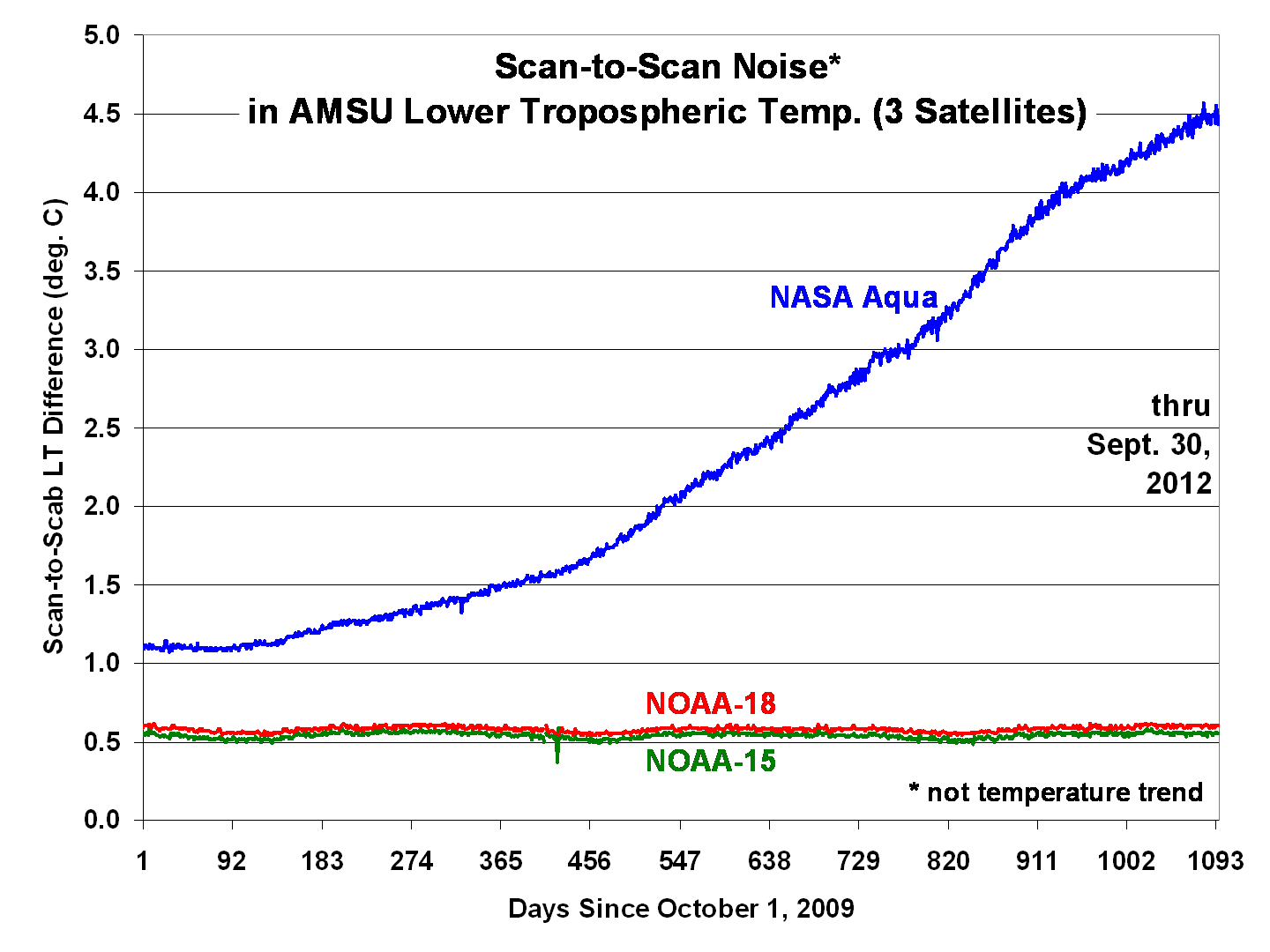I’ve been receiving an increasing number of e-mails asking, basically, is there something wrong with the Aqua satellite daily global temperatures which are posted at the NASA Discover website?
Well, John Christy and I are ready to say, “yes, there is”.
Over the last few years, the NASA Aqua satellite has been our “backbone”, or reference, satellite since it is kept in a stable orbit with on-board propulsion. This means there are no orbital decay adjustments or diurnal drift adjustments necessary for the AMSU measurements made from Aqua.
Because of this advantage Aqua has over the NOAA polar orbiters, the other satellites (NOAA-15 and NOAA-18) are basically forced to agree with the temperature trends from Aqua AMSU in our processing.
Unfortunately, it just so happens that the main channel we use for tropospheric temperature monitoring, AMSU channel 5, has been experiencing increasing noise in recent years on the Aqua satellite. Evidence of this can be seen in the following plot from those 3 satellites (NOAA-15, NOAA-18, and Aqua) over the last 3 years (click for large version):

The numbers plotted are the average absolute differences from each AMSU scan line to the next in our lower tropospheric temperature (LT) retrieval. With a scan line separation of about 50 km, even a noiseless instrument would produce non-zero values because the satellite is always passing over the tropics, then the poles, then the tropics, etc. In other words, the above plot contains both signal and noise.
Obviously, the noise in Aqua AMSU channel 5 has increased dramatically. In fact, the NASA AIRS Team stopped using Aqua AMSU ch. 5 in their temperature retrievals months ago. (BTW, the LT computation causes an amplification of the instrument measurement noise, but the relative increase in Aqua noise vs. the other satellites is not affected, which from the above plot looks like about a factor of 7 or 8).
So, you might ask, why include Aqua AMSU in our processing if the noise is so large? Well, because we use over 300,000 measurements to get a global monthly average. If the noise in Aqua AMSU ch. 5 was truly random, the huge increase in noise seen in the above plot should not cause a drift in the calibration of the instrument.
But increasing noise in a microwave radiometer can have different causes. And not all of the causes would result in truly random noise characteristics. That appears to be the case with Aqua AMSU ch 5.
So What Is the Corrected Temperature Anomaly for September, 2012?
Version 6.0 of our dataset will take care of the diurnal drift effects, but due to our other responsibilities, John and I have not quite finished v6.0. Nevertheless, we think we can we produce a preliminary update in the next couple weeks. The results suggest that there has been a spurious warming in Aqua AMSU LT which has reached close to 0.2 deg. C last month. It has been increasing over the last couple years. Do NOT expect the long term warming trend during 1979-2012 to decrease, though, because there are other changes to the long-term time series which cancels out the recent spurious warming.

 Home/Blog
Home/Blog



